How Does ChatGPT Work From a Child’s Perspective?
- 1 How Does ChatGPT Work From a Child’s Perspective?
- 2 The Story of ChatGPT & Lily’s Quest for Magical Storytelling
- 3 How Does ChatGPT Learn?
- 4 ChatGPT’s Ability to Be Creative
- 5 ChatGPT Doesn’t Know Everything
- 6 ChatGPT’s Secret: Neural Networks
- 7 The Future of ChatGPT
- 8 What is AI?
- 9 How does AI learn?
- 10 What are Neural Networks?
- 11 What are Language Models?
- 12 What is ChatGPT?
- 13 Conclusion
Welcome to a magical journey into the world of ChatGPT! This article is a child-friendly story which answers the question “how does ChatGPT work?” in a way we can all understand. We delve into the fascinating world of Artificial intelligence (AI), Large Language Models (LLMs), and neural networks, all through the eyes of a young girl named Lily. As we follow Lily’s adventures with ChatGPT, we’ll break down complex concepts into simple, engaging stories and explanations that both children and parents can enjoy.
So, if you’ve ever wondered “how does ChatGPT work?” or struggled to understand the complex language of AI, buckle up for a thrilling ride into the heart of AI storytelling!
The Story of ChatGPT & Lily’s Quest for Magical Storytelling
Once upon a time, in a world full of computers, codes, imagination and wonder, there was a little girl named Lily. Lily loved to read books and dream about magical creatures and faraway lands. She often wondered if there could be something even more amazing than the stories she read. Little did she know, her question was about to be answered!

What is ChatGPT?
In the big city where Lily lived, there was a magical laboratory where scientists worked day and night to create something extraordinary. They wanted to make a computer program that could write stories and talk like a real person. They called it ChatGPT, which stood for Chat Generative Pre-trained Transformer. It was a mouthful of words, but it was going to change everything!
One sunny day, Lily’s dad, who was a scientist, brought home a special book. It was filled with colourful pictures and fascinating words. The book was all about ChatGPT and how it worked. Lily’s eyes sparkled with excitement as her dad began to read.
“Imagine, Lily,” her dad said, “a computer program that can write stories just like you do! It learns from all the books and stories in the world to understand how words fit together. It’s like having a writing buddy who knows all the secrets of language!”
Lily’s imagination soared as she pictured a computer program reading books and learning about words. She imagined it as a friendly creature with a big brain, like a wise owl or a clever fox. This creature was called a neural network, it had many little parts called neurons that worked together to solve problems, just like friends solving a puzzle.
Her dad continued, “ChatGPT is like a super smart friend who can guess what words should come next in a sentence. It creates stories by putting words together in a way that makes sense. It’s like magic!”
Lily’s eyes widened with wonder. She imagined ChatGPT sitting at a desk, surrounded by books, and writing stories with a quill pen. It was like having a friend who could help her come up with amazing ideas for her own stories!
“But wait, Lily,” her dad said with a smile, “there’s something even more incredible about ChatGPT. It doesn’t always choose the most likely word. It adds a sprinkle of randomness to make the writing more interesting, like a secret ingredient in a recipe. This randomness is controlled by a special setting called ‘temperature.”
Lily giggled at the thought of ChatGPT being a mischievous chef, adding a pinch of creativity to its writing. She imagined it as a little chef wearing a tall hat, stirring a big pot of words and ideas.
As Lily’s dad finished reading, Lily’s mind was filled with excitement and curiosity. She couldn’t wait to see ChatGPT in action and write stories together. She imagined herself sitting at a cosy desk, surrounded by books and papers, with ChatGPT by her side, helping her create magical tales.
And so, Lily’s journey into the world of ChatGPT began. With her imagination and ChatGPT’s cleverness, they would write stories that would touch the hearts of people all around the world. Together, they would unlock the secrets of language and bring joy to everyone who reads their words.
From that day forward, Lily and ChatGPT became the best of friends, embarking on countless adventures through the power of words. And in the magical laboratory, scientists continued to explore the wonders of AI, inspired by the dreams of children like Lily, who imagined a world where computers could think and create just like humans.
And so, the story of Lily and ChatGPT reminds us that imagination has the power to change the world and that with a little bit of magic and a lot of curiosity, anything is possible.
The end.
How Does ChatGPT Learn?
Just like you, ChatGPT loves to learn. But instead of going to school or reading books, it learns from reading lots of texts from books, websites, and other places. And just like you make mistakes when you’re learning something new, yes ChatGPT can make mistakes too. Sometimes, it might say things that don’t make sense or are incorrect because it’s just predicting what comes next based on what it has learned. But don’t worry, the more it learns, the better it gets!
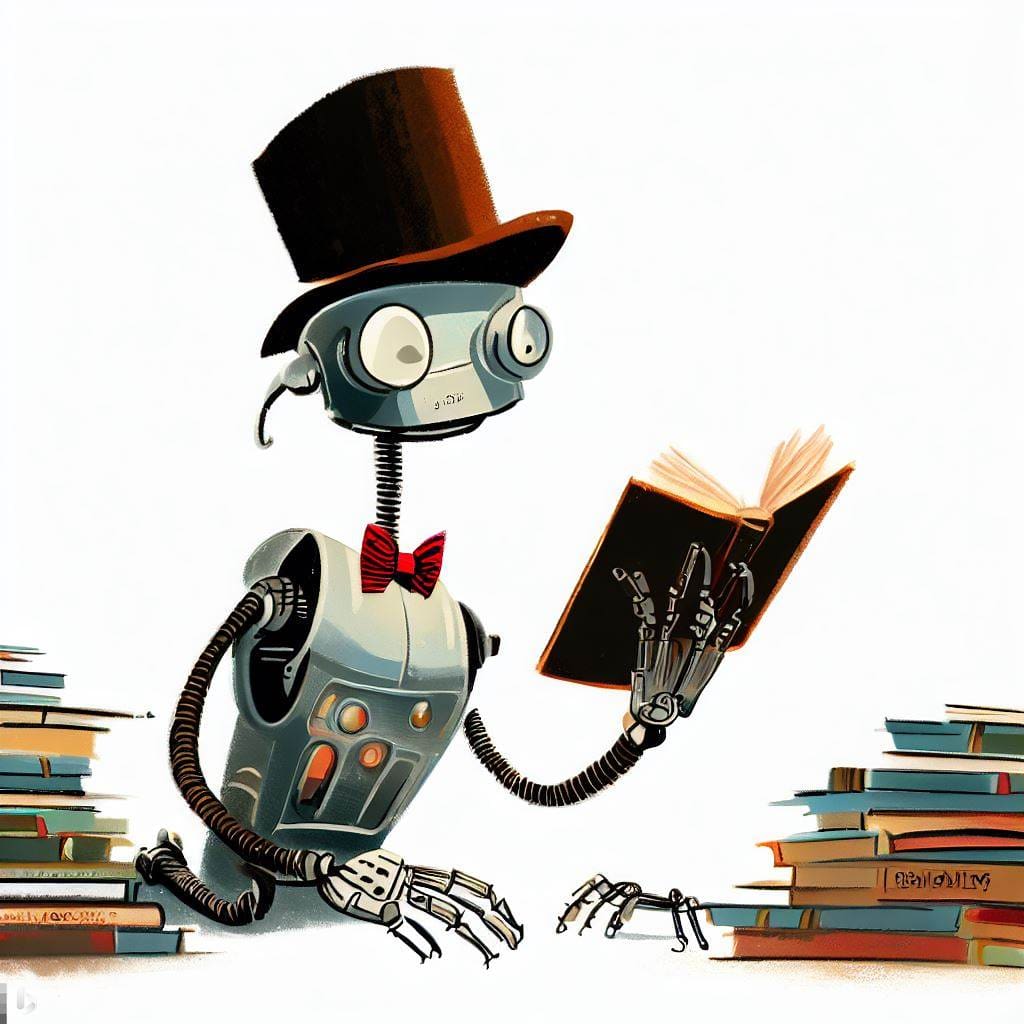
How does ChatGPT work and learn new information
In order to learn, ChatGPT needs training. Training ChatGPT is a bit like training a puppy. It needs lots of examples and practice. It learns from these examples and generalises from them. The more examples it gets, the better it becomes at understanding and predicting what comes next. But it also requires a large amount of training data and computer power, which is like the food and energy a puppy needs to grow and learn.
ChatGPT’s Ability to Be Creative
Did you know ChatGPT can be creative too? When it’s telling a story, it doesn’t always pick the most common word to come next in a sentence. Sometimes, it picks a less common word, just like when we’re telling a story and we don’t want it to be boring, so we add in surprising or unexpected parts. That’s ChatGPT’s secret ingredient – a sprinkle of randomness!
ChatGPT Doesn’t Know Everything
Now, it’s important to remember that even though ChatGPT is super smart and creative, it doesn’t know everything. It doesn’t understand the world like we do. It doesn’t have feelings, and it doesn’t know what’s happening in the world right now. It only knows what it has learned from the text it has read. So, while it’s a fantastic storyteller, it’s not perfect.
ChatGPT’s Secret: Neural Networks
Do you want to know a secret? The magic behind ChatGPT’s storytelling abilities is something called a neural network. It’s a model inspired by how our brains work and can be trained to do various tasks. Just like how our brain has lots of little parts working together to help us think and learn, a neural network has lots of little parts working together to figure things out.
The Future of ChatGPT
What does the future hold for ChatGPT? Well, it’s an ongoing area of research with many techniques and tricks being explored to make it even better. Just like how we grow up and learn new things, ChatGPT is also growing and learning. Who knows what amazing stories it will be able to tell in the future?
What is AI?
Now, you might be wondering, what is AI? AI, or Artificial Intelligence, is like a magic box that can think and learn, just like us!
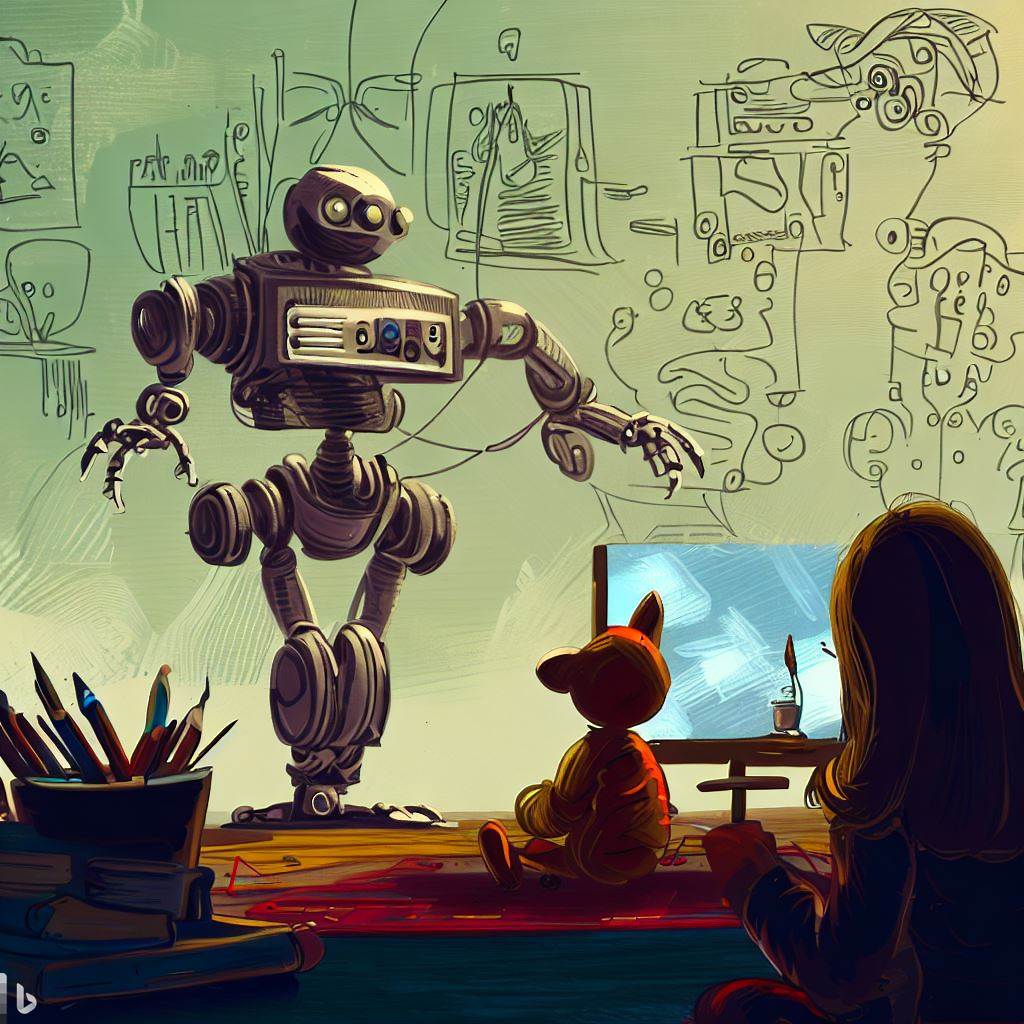
What is AI
Imagine if your toys could learn to play new games, or if your drawings could come to life and tell their own stories. That’s what AI can do! It’s a special kind of computer science that makes machines smart. These smart machines can understand language, recognise pictures, solve problems, and even make decisions. It’s like they have their own brains!
ChatGPT is a part of this magical world of AI. It’s a testament to human creativity and innovation, a window into a future where computers can think and create just like humans.
But remember, while AI is powerful, it’s still a tool created by us, to help us. And who knows, maybe one day, you could be the one creating a super-smart AI like ChatGPT!
How does AI learn?
AI learns a bit like how you learn. Remember when you learned to read the alphabet or ride a bike? At first, you might have fallen off a few times. But each time you got back on, you learned a little more about how to balance and pedal. After a while, you could ride your bike without even thinking about it.
AI learns in a similar way. It tries to do a task, sees how well it did, and then tries to do better next time. This is called machine learning.
What are Neural Networks?
Neural networks are a special part of AI that works a lot like our brains.
A neural network is like a very smart computer that can learn and understand things. Imagine a huge team of tiny workers in your brain. Each worker has a small job, like recognising a colour or a shape. But when they all work together, they can do big jobs, like recognising a picture of your best friend. Neural networks work the same way. They have lots of tiny parts called neurons that work together to solve big problems.
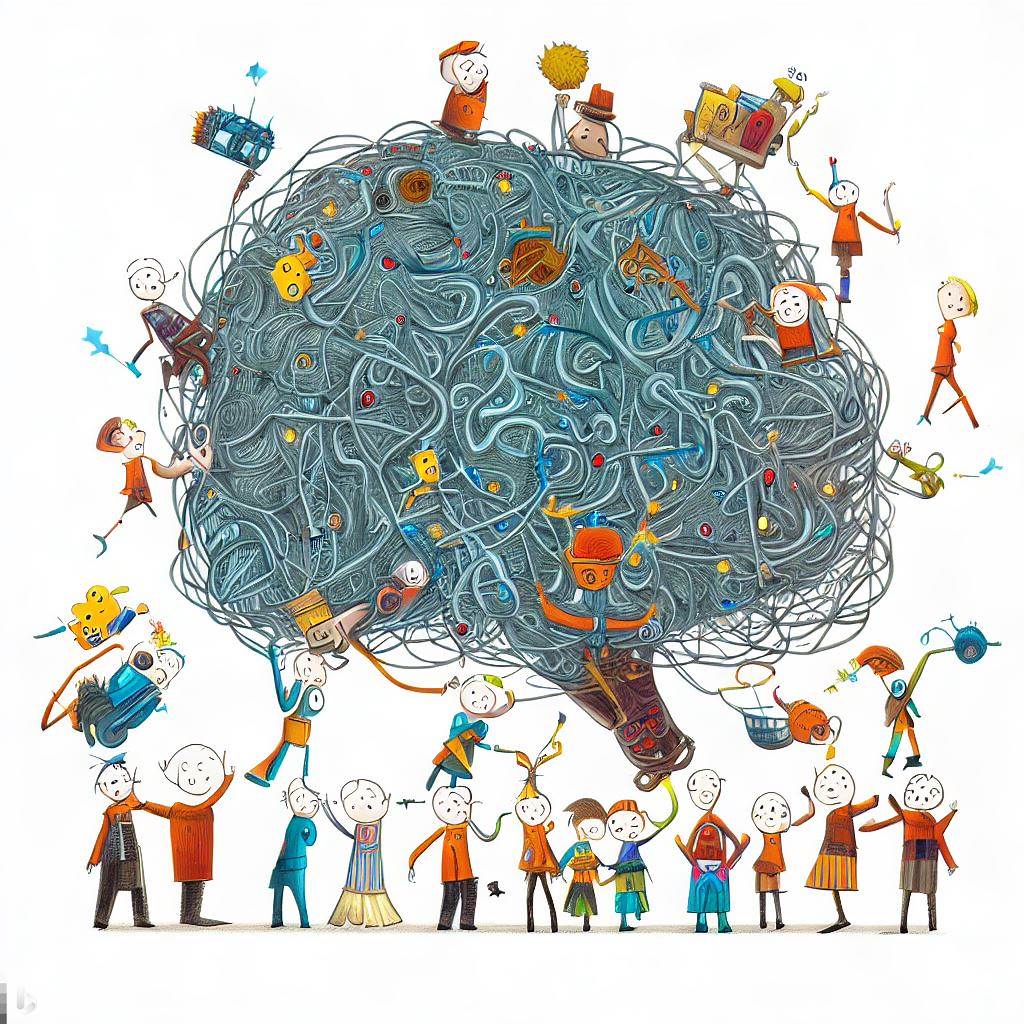
What are neural networks
Or, imagine you have a big puzzle to solve, but you don’t know how to do it. A neural network is like having a group of friends who can help you solve the puzzle. Each friend looks at a small part of the puzzle and tries to figure out what goes there. Then, they all share their ideas and work together to find the right solution.
Neural networks work in a similar way, with each neuron looking at a small piece of information and then sharing its findings with the other neurons to come up with the best answer. The more the neural network learns, the better it gets at solving problems. It can look at lots of examples and figure out patterns and rules to help it understand new things. Just like how we learn by practising and getting better over time, a neural network learns by practising and getting smarter with each new piece of information it sees.
So, it’s like having a really clever friend who can help you solve all kinds of puzzles and answer your questions!
What are Language Models?
Language models are like the grammar police of the AI world.
They learn the rules of language so they can understand and generate text that makes sense. Imagine if you had a friend who was really good at telling stories. They know how to put words together in a way that’s exciting and makes sense. That’s what a language model does.
It learns from lots of examples and then uses that knowledge to create its own sentences.
What is ChatGPT?
As you’ve probably guessed by now, ChatGPT is a super smart AI that’s really good at chatting.
It’s like having a pen pal who never gets tired of writing. You can ask it questions, tell it to write a story, or even just chat about your day. It uses a language model to understand and generate text. So it’s like it has a big book of all the words and sentences it’s ever seen, and it uses that book to write its own messages. It’s a fun and helpful friend who’s always ready to chat!
Remember, while AI and tools like ChatGPT are really smart, they’re still just machines. They don’t have feelings or thoughts like humans do. They use neural networks, which are like pathways that help them process information, learn and solve problems.
But don’t worry, they won’t take over the world or anything like that! They’re created by scientists and engineers who are always working to make them better and smarter.
Who knows what amazing things they’ll be able to do in the future!
Conclusion
The above overview of ChatGPT and how it works was inspired by a huge 19,000-word article by Stephen Wolfram. The article provides a detailed, mathematical and comprehensive explanation of how ChatGPT works, including the concept of large language models (LLMs), the process of generating text, and the use of neural nets.
However, even as an adult (an adult who works in IT), I realise how hard some of these concepts were to understand, let alone for a 10-year-old child.
So, with the help of ChatGPT, I decided to break this down into stories and simple texts that would explain what ChatGPT is and the various concepts involved like Artificial Intelligence, Large Language Models, and Neural Nets.
For further reading, we’ve recently published an article that explores the different types of AI, including Artificial Narrow Intelligence (ANI), Artificial General Intelligence (AGI) and Artificial Super Intelligence (ASI). We’ve even tied this into ChatGPT and the various language models, such as GPT-4 to answer the question of whether they are near to being a true AGI level of intelligence. And of course, for the ultimate explanation, read the article by Stephen Wolfram: https://writings.stephenwolfram.com/2023/02/what-is-chatgpt-doing-and-why-does-it-work.
Hopefully, you found this simple explanation of ChatGPT and all things AI useful. We’d love to hear your thoughts, so please leave a comment below or chat with us on social media.
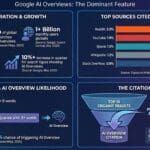

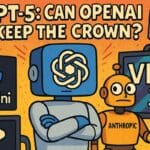


I think this is amazing. It will be so useful. I feel blown away
Thanks for the lovely feedback.